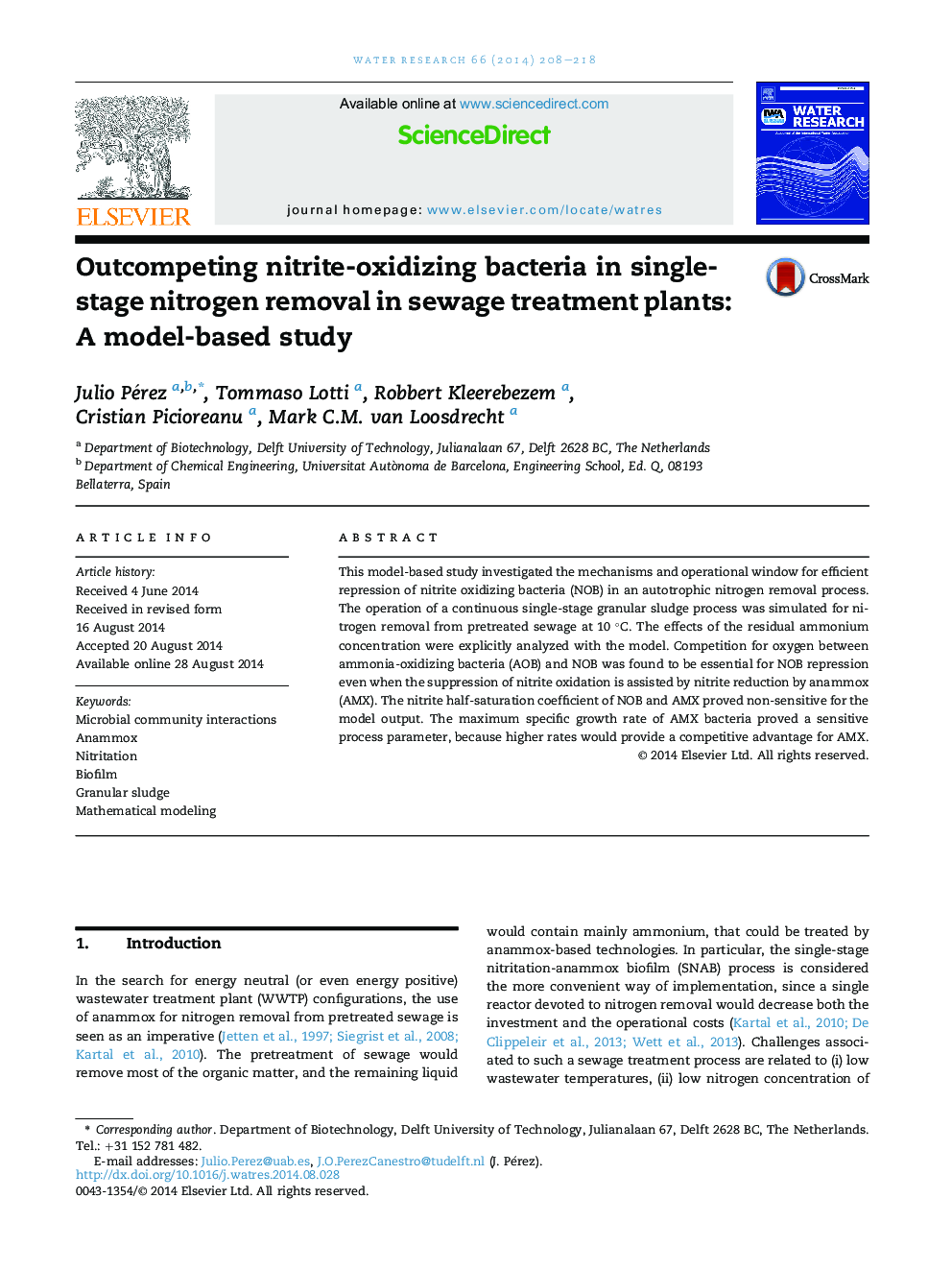| Article ID | Journal | Published Year | Pages | File Type |
|---|---|---|---|---|
| 4481395 | Water Research | 2014 | 11 Pages |
•Residual ammonium triggers effective nitrite-oxidizing bacteria (NOB) repression.•NOB repression is due to oxygen competition with ammonia-oxidizing bacteria.•KO2,NOB/KO2,AOB ratio was found to be the most critical factor for NOB repression.•Anammox doubling time proved to be a sensitive parameter for NOB repression.
This model-based study investigated the mechanisms and operational window for efficient repression of nitrite oxidizing bacteria (NOB) in an autotrophic nitrogen removal process. The operation of a continuous single-stage granular sludge process was simulated for nitrogen removal from pretreated sewage at 10 °C. The effects of the residual ammonium concentration were explicitly analyzed with the model. Competition for oxygen between ammonia-oxidizing bacteria (AOB) and NOB was found to be essential for NOB repression even when the suppression of nitrite oxidation is assisted by nitrite reduction by anammox (AMX). The nitrite half-saturation coefficient of NOB and AMX proved non-sensitive for the model output. The maximum specific growth rate of AMX bacteria proved a sensitive process parameter, because higher rates would provide a competitive advantage for AMX.
Graphical abstractFigure optionsDownload full-size imageDownload high-quality image (229 K)Download as PowerPoint slide
